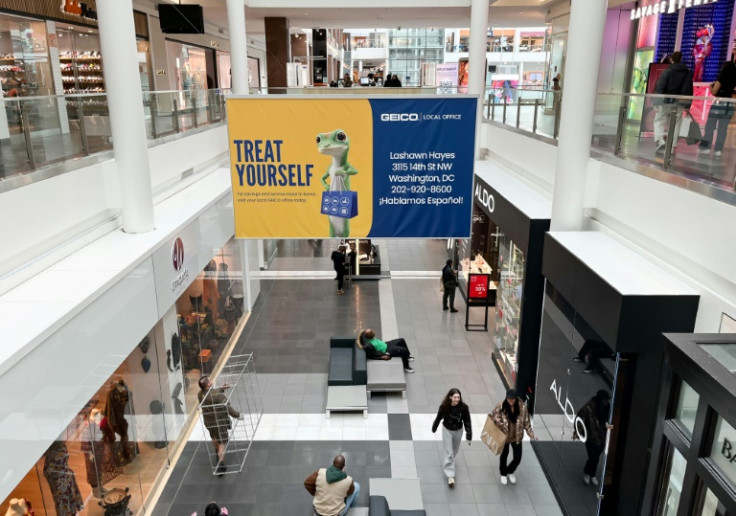US Economy Beats Growth Expectations In Second Quarter

US economic growth blew past expectations in the second quarter, boosted by consumer spending and inventory building despite high interest rates, government data showed Thursday.
After a slow start this year, the world's biggest economy grew at an annual rate of 2.8 percent in the April to June period, up from 1.4 percent in the first three months, said the Commerce Department.
The initial estimate was markedly above the 1.9 percent growth rate economists anticipated -- a reassuring sign that consumption remains resilient.
President Joe Biden hailed the economy's strength in a statement, adding he had "more to do" in his last six months in the White House.
Biden, who endorsed Vice President Kamala Harris after his historic decision to drop out of the 2024 election, added: "The Vice President and I will keep fighting for America's future."
The acceleration "primarily reflected an upturn in private inventory investment and an acceleration in consumer spending," said the Commerce Department.
This was "partly offset by a downturn in residential fixed investment," it added.
While sectors like manufacturing and housing have been struggling after the Federal Reserve rapidly hiked interest rates in 2022 to combat surging inflation, consumption has been stronger than analysts expected.
This boosted the economy despite rates hovering at their highest levels in more than two decades, making borrowing more expensive for individuals and companies.
A key factor underpinning consumption has been the labor market, which saw continued wage growth and businesses reluctant to let go of workers after difficulties in hiring during the pandemic.
With inflation slowing and salaries still growing, economists said consumers' real disposable income gains became bigger, allowing them to keep dipping into their wallets.
Despite the economy outperforming predictions of possible recession, Biden has struggled to assuage concerns of many Americans feeling the pinch from higher costs of living.
With his shock exit from the 2024 election, it remains to be seen if that negative sentiment will transfer to his likely Democratic replacement Harris.
"Domestic demand retained solid momentum through June," said EY chief economist Gregory Daco.
Recent labor market and consumer spending data, however, suggest that economic activity is "gently softening," he said.
"We see consumption continuing to be the engine of the economy," Matthew Martin of Oxford Economics told AFP.
Although unemployment has been edging up, the trend has more to do with entrances into the market rather than layoffs, he noted.
This means it is not the start of a cycle where unemployment leads to income loss, in turn reducing spending and triggering more job losses.
But there remain risks as unemployment tends to "shoot up" quickly, he said, although this is not currently the expected outcome.
"That's a big case to begin cutting rates in September and follow up with one every other meeting from there," he said of the US Federal Reserve's policymaking committee.
Analysts do not see the latest data discouraging the Fed from a September rate cut.
But this could "mildly disappoint" investors hoping for a reduction at next week's policy meeting, said Pantheon Macroeconomics.
"The gains come as many worry that growth will not only slow, but we may be seeing cracks in the labor market," said KPMG chief economist Diane Swonk.
With inflation cooling and the prospect that second quarter growth figures are "more of an outlier than the norm," Swonk expects the Fed would be "willing to open the door to rate cuts in September but not move in July."
Martin of Oxford Economics added that the US election also represents a "wildcard."
A second presidency of Republican nominee Donald Trump could bring major policy changes.
"That is going to make a big difference, particularly in 2025," he said.
© Copyright AFP 2025. All rights reserved.





















